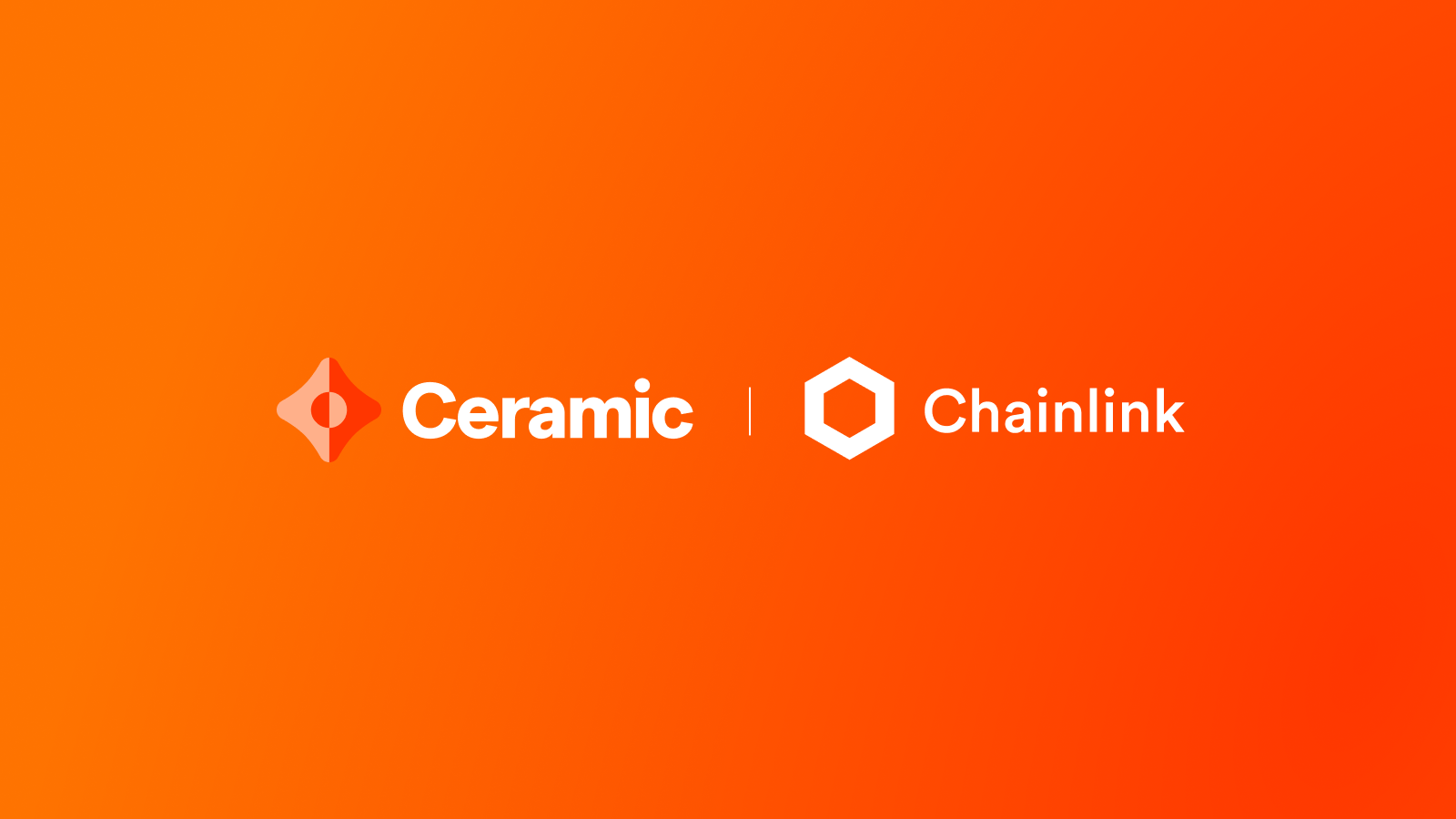Ceramic + Chainlink VRF: the toolset for building more dynamic NFTs
Learn how to create NFTs with evolving content, randomized drops, and owner-remixable content.

NFTs let anyone proveably own a unique digital property. This technology is revolutionizing collectibles, digital art, gaming, media, and even science. However, to date, the type of property that could be managed through NFTs has been limited to constant, static, hardcoded properties. This is great for art, collectibles, and other use cases where immutability is a feature.
Most types of property benefit from evolution, mutability, or gamification. Together, Ceramic and Chainlink give creators the tools to create more dynamic NFT experiences. Ceramic allows for hosting more flexible forms of content, while Chainlink can supply external inputs that change and gamify NFTs, creating what’s called dynamic NFTs.
With these new tools, NFT-based experiences can expand to include:
- Evolving art and collectibles, changed by the original creator, current owner, or new data like the weather
- Collectible packs of NFTs with special edition traits randomly chosen upon opening
- Property that gains value from each owner depending on how they use it, like an in-game item that keeps its own history of how it’s used in gameplay
- Ownership rights that let the current NFT holder change the content associated to the NFT, for example for land parcels in AR, VR, or games
“When you buy a physical piece of land, the house doesn’t disappear. There’s a foundation there,” says Geo Web founder Graven Prest. “We need to replicate that for NFTs in the digital world.”
CERAMIC is a sovereign data network for creating, storing and sharing data under the direct control of any identity. Because data in Ceramic is mutable, and only by the controller of that data object, it provides not only a fully decentralized option to store NFT content and metadata but the first way to attach dynamic content to an NFT, with strict permissions and access control rights. Because Ceramic has a cross-chain identity system built-in, this can be deployed easily for any blockchain.
There are two ways to use this in NFT experiences. First, Ceramic streams can be updated only by the original creator. This would let artists sell NFTs and then update and enhance their work over time. The history is preserved, so this mutability is purely a gain. Athletes could sell NFTs that evolve as their stats do.
NFT:DID, a recently released feature in Ceramic, allows the current owner of an NFT exclusive rights to update content. For example, Geo Web is using Ceramic to store content displayed in their AR metaverse. The owner of each parcel of land, represented by an NFT, can change the content being displayed. This could be used for owner-only logbooks, storing critical metadata or permissions, profile pics with changeable attire, collective playlist creation, or more.
CHAINLINK provides more dynamic ownership models for NFT experiences based on reliable external data feeds and trust-minimized off-chain computations. Most notably, Chainlink Verifiable Random Function (VRF) generates a tamper-proof and auditable source of randomness, which users can reference to offer fair drops of limited edition NFTs, evolve NFTs over time via pure entropy, and retain rarity odds in NFT distribution models.
Given the historical security and reliability of Chainlink VRF, we recommend that any developer launching NFTs on Ceramic and needing randomness to use Chainlink VRF. Ultimately, this will help them create a more exciting, transparent, and fraud-proof user experience, as well as help gamify NFTs by enabling them to change over time.
About Chainlink
Chainlink is the industry standard oracle network for powering hybrid smart contracts. Chainlink Decentralized Oracle Networks provide developers with the largest collection of high-quality data sources and secure off-chain computations to expand the capabilities of smart contracts on any blockchain. Managed by a global, decentralized community, Chainlink currently secures billions of dollars in value for smart contracts across decentralized finance (DeFi), insurance, gaming, and other major industries.
Chainlink is trusted by hundreds of organizations, from global enterprises to projects at the forefront of the blockchain economy, to deliver definitive truth via secure, reliable oracle networks. To learn more about Chainlink, visit chain.link, subscribe to the Chainlink newsletter, and follow @chainlink on Twitter. To understand the full vision of the Chainlink Network, read the Chainlink 2.0 whitepaper.
Solutions | Docs | Discord | Reddit | YouTube | Telegram | GitHub
About Ceramic
Ceramic is a network for sovereign data that lets developers easily build rich applications on top of blockchains and IPFS. Ceramic's permissionless data streaming network stores streams of information and ever-changing files directly on the decentralized web, eliminating the need for a backend. Because all data is managed directly by cross-chain identities, it’s easy to discover and share content across application boundaries.
Ceramic is in use by hundreds of applications building the future of finance, coordination, and Web3. To learn more about Ceramic, visit ceramic.network, follow @ceramicnetwork on twitter, or join the developer community.
Website | Twitter | Discord | GitHub | Documentation | Blog | IDX Identity

